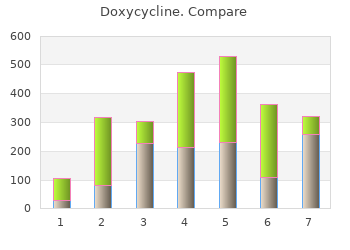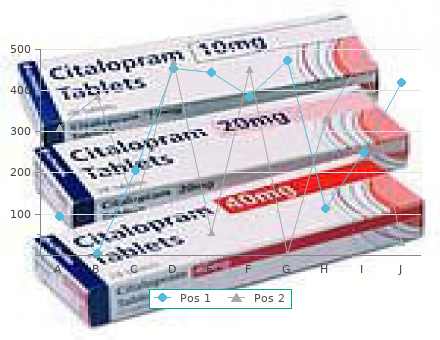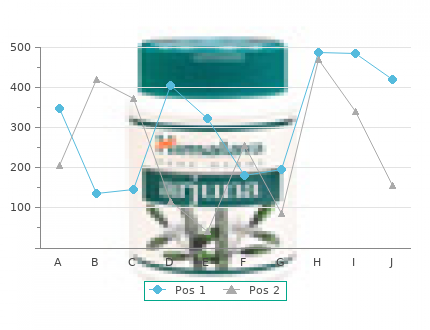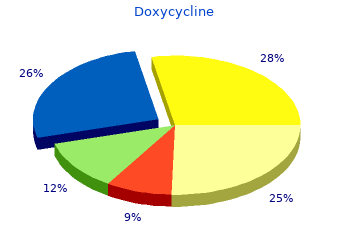Doxycycline
2018, Western International University, Faesul's review: "Doxycycline 200 mg, 100 mg. Only $0,25 per pill. Order online Doxycycline.".
This may help in the development of chest stress wave decouplers to protect the lungs from overpressure (28) order 100mg doxycycline with mastercard. The minimally invasive nature of endovascular stents make them very attractive in accordance with the new trend in surgery to develop less invasive procedures aiming at reduction of operative risks and complications. Currently, these devices are not available for urgent cases, but in the near future, we can expect to have sufficient inventory of devices available for emergency use. Prevention of secondary injuries caused by trauma as a result of physiologic decompensation, delay in treatment, or suboptimal management is essential. Secondary injuries in case of brain and abdominal trauma are better recognized than in case of chest trauma. This may potentiate a modification in clinical protocols used in the management of patients with cardiothoracic trauma in the future. Mother and Father; I never ever forget you or disappoint you in spite of thousands of miles from you in the motherland Egypt. I feel to express my heartfelt appreciation to my grandparents who envisioned and upheld an uncompromising goal in life, which was “to be what you want to be at any place in this world”. Thank you Jim for your revision of the thesis and your much appreciated comments which were taken into consideration throughout the dissertation. John, many thanks for your comprehensive revision of the thesis and for your much appreciated comments which definitely were taken into consideration throughout the thesis. The injury severity score: a method for describing patients with multiple injuries and evaluating emergency care. Experience with spiral computed tomography as the sole diagnostic method for traumatic aortic rupture. Prospective study of blunt aortic injury: multicenter trial of the American Association for the Surgery of Trauma. Emergency room thoracotomy for the resuscitation of patients with ´fatal´ penetrating injuries of the heart. A ruptured thymic branch aneurysm mimicking a ruptured aortic aneurysm, with associated bronchial artery aneurysms: Report of a case. Surgical management of ruptured descending thoracic aneurysm with massive extrapleural hematoma [in Japanese]. Prospective study of the effect of safety belts on morbidity and health care costs in motor-vehicle accidents. Cardiac herniation with catheterization of the heart, inferior vena cava, and hepatic vein by a chest tube. Endovascular Graft Committee: guidelines for development and use of transluminally placed endovascular prosthetic grafts in the arterial system. Penetrating atherosclerotic aortic ulcer with dissecting hematoma: control of bleeding with percutaneous embolization. One of the Although huge extrapleural hematoma extrapleural hematoma was 34 of 477, common injuries to the chest, particularly can cause ventilatory and circulatory dis- 7. The incidence of thoracic lesions rib fracture, hemothorax, lung contusion, turbances and even death, it has received was 86 of 34 5 2. Cer- whereas the incidence of extrathoracic geon with a reliable clinical clue that the tain basic and modern facts need to be lesions was 30 of 34 5 0. A thoracotomy was used suc- Key Words: Extrapleural hema- study was undertaken to analyze the inci- cessfully to remove a huge hematoma in toma, Subpleural/retropleural/epipleural dence, diagnosis, management, morbidity, one patient. One such compli- women, ranging from 29 to 87 years with an average age of cation is pleural disorder. When there is examined patient age, gender, mechanism of injury, comor- blood in the intrapleural space, the term hemothorax is used, bidity, clinical diagnosis, radiologic diagnosis, associated in- whereas there is no appropriate scientific term nor nomen- juries, complications, treatment, length of hospital stay in the clature for bleeding in other abnormal spaces in the chest intensive care unit and the ward, and follow-up. Follow-up of these patients showed that the most common complication was pain in six patients, chest- tube complications in three, and sternal hematomas in two. Two cases were called “extrapleural,” and one case was named both “extrapleural” and “subpleural” by two different Fig. According to a standard medical dictionary,30 toma that has a D-shaped outline with its base located against the the word “subpleural” is defined as located beneath the corresponding part of the chest wall. The pleural reflection at the pleura, “extrapleural” is described as outside the pleural cav- lower margin of the lesion is seen, and the costophrenic angle is not ity, and “epipleural” is described as located on a pleural obliterated. Associated rib fractures were found in 30 of 34 was called “extrapleural fluid” by Smedal and Lippincott in (88. More than half of the patients had an associated 2 3 1950 and “retropleural hematoma” by Scheff et al. These to 48 hours after admission in 30 patients, but delayed 5 days terms are almost unknown in our practice of cardiothoracic in 1 patient and 10 days in 3 patients. Of these four patients, and trauma surgery, probably because of the unrecognized there were only two patients with associated hemothorax: this significance of epipleural or subpleural bleeding. Retropleural is not informative enough ment was given), and we found that no patient developed a because the pleura turns itself, and what is called retropleural delayed hemothorax. Conservative treatment with observation and chest radio- graph control was provided in 33 patients, and 1 patient Classification needed a thoracotomy to evacuate the hematoma after unsuc- We suggest the following simple etiologic classification cessful needle aspiration. Blunt thoracic injury begins with fractures of the ster- the aortic wall, including the pleural spaces and mediastinum.


If the pandemic starts in a year’s time order doxycycline 100mg fast delivery, it is likely that we will then have some expe- rience in developing mock vaccines, so that a vaccine could be produced relatively quickly using a variety of the technologies currently under investigation. There would still be a significant delay, and it is likely that there would still be insufficient quantities, with rationing required. If the pandemic is delayed by a few years, we may well have the required vaccine production capacity to minimise the disastrous consequences. Strategies for expediting the development of a pandemic vaccine Shorten the time between emergence of a pandemic virus and the start of commer- cial production. This will require adopting a centralized evaluation team to examine the find- ings of the studies and give clearance for the use of the vaccine. The vaccine needs to become established through “mock” trials in order to be able to be expedited in this way – then, like the current influenza vaccine, it is known, and only brief studies are required to confirm immunogenicity and safety. Increased production capacity must be developed worldwide – for example, changing to cell culture vaccines. Another important means to improve pro- duction is to increase consumption – using more of the current vaccine today will not only decrease the burden of current influenza disease, as well as help- ing to prevent reassortment in humans infected with two strains of virus, but will ultimately enable production to be increased. Antigen sparing methods, such as intradermal injection, need to be researched more thoroughly, as they provide for a potential saving in antigen – the 1 µg of antigen (per strain) in current vaccines could be lowered considerably. If we th could use one 8 of the dose, our current 900 million monovalent doses could be expanded to 7. Adjuvants need to be evaluated – if immunogenicity can be enhanced, less an- tigen would be required for a protective immune response. Mock-up vaccines must be developed and tested in clinical trials to determine the most antigen sparing formulation and the best vaccination schedule (Fedson 2005, Kilbourne 2005). Controversies A number of controversies surrounding the development of a new influenza vaccine need to be dealt with (Fedson 2005, Osterholm 2005). Financial – patents exist for the plasmid-based methods of making virus in cell culture and the legal implications in various countries need to be examined and ad- dressed. Rationing – in the event of vaccine shortage, higher risk groups will need vaccina- tion first, along with those working on the front lines to control the pandemic. In such an event, the definition of “high risk group” may need to be revised – will it include children, for instance? Liability issues – due to increased vaccination with current vaccines, greater atten- tion must be paid to liability. Several countries have legislation that limits and/or covers certain liability for vaccine companies – encouraging such legislation will make vaccine companies feel more free to develop new vaccines, and increase the supply of current vaccines. When the time comes for rapid entry of pandemic vac- cines into general use, such legislation will be important. Organising Barnett employs a Haddon Matrix to show what sort of planning needs to be done at different stages of the pandemic, from pre-pandemic to post-pandemic (Barnett 2005). In 2001, the Global Agenda for Influenza Surveillance and Control was established (Webby 2003, Stohr 2005). Its role is to enhance our surveillance abilities, in order to better detect a pandemic, and prepare for influenza seasons until then. It needs to help solve the contro- versies over financing, patents and intellectual property, equity for developing countries and countries not producing vaccine, and rationing of vaccine when sup- plies do not meet the demands of a population of more than 6 billion people. We need an international approach to public funding that will pay for the excess production ca- pacity required during a pandemic. Journal of Infectious Diseases, 1997, vol 176, suppl 1, Pandemic Influ- enza: Confronting a Re-emergent Threat http://www. Influenza Vaccination in Pregnancy: Practices Among Obstetrician-Gynecologists --- United States, 2003--04 Influenza Season. Effectiveness and cost-benefit of influenza vaccination of healthy working adults: A randomized controlled trial. Report of meeting on the development of influenza vaccines with broad spectrum and long-lasting immune responses, World Health Organization, Geneva, Switzerland, 26-27 February 2004. Multiple gene segments control the temperature sensitivity and attenuation phenotypes of ca B/Ann Arbor/1/66. Safety, vaccine virus shedding and immunogenic- ity of trivalent, cold-adapted, live attenuated influenza vaccine administered to human im- munodeficiency virus-infected and noninfected children. Safety and immunogenicity of a Pro- teosometrade mark-trivalent inactivated influenza vaccine, given nasally to healthy adults. An improved reverse genetics system for influ- enza A virus generation and its implications for vaccine production. The efficacy and cost effective- ness of vaccination against influenza among elderly persons living in the community. Live attenuated influenza vaccine, trivalent, is safe in healthy children 18 months to 4 years, 5 to 9 years, and 10 to 18 years of age in a community-based, nonrandomized, open-label trial. Influenza vaccination of health care workers in long- term-care hospitals reduces the mortality of elderly patients. Production of pilot lots of inactivated influenza vaccines from reassortants derived from avian influenza viruses - Interim biosafety risk assessment.

In addition generic 200 mg doxycycline fast delivery, blood levels of an enzyme called alkaline phosphatase are typically elevated in people with Paget’s disease. Bisphosphonates, drugs that decrease the activity of osteoclasts, are often used in the treatment of Paget’s disease. However, in a small percentage of cases, bisphosphonates themselves have been linked to an increased risk of fractures because the old bone that is left after bisphosphonates are administered becomes worn out and brittle. Still, most doctors feel that the benefits of bisphosphonates more than outweigh the risk; the medical professional has to weigh the benefits and risks on a case-by-case basis. Bisphosphonate treatment can reduce the overall risk of deformities or fractures, which in turn reduces the risk of surgical repair and its associated risks and complications. Blood and Nerve Supply The spongy bone and medullary cavity receive nourishment from arteries that pass through the compact bone. The arteries enter through the nutrient foramen (plural = foramina), small openings in the diaphysis (Figure 6. The osteocytes in spongy bone are nourished by blood vessels of the periosteum that penetrate spongy bone and blood that circulates in the marrow cavities. As the blood passes through the marrow cavities, it is collected by veins, which then pass out of the bone 230 Chapter 6 | Bone Tissue and the Skeletal System through the foramina. In addition to the blood vessels, nerves follow the same paths into the bone where they tend to concentrate in the more metabolically active regions of the bone. The nerves sense pain, and it appears the nerves also play roles in regulating blood supplies and in bone growth, hence their concentrations in metabolically active sites of the bone. By the sixth or seventh week of embryonic life, the actual process of bone development, ossification (osteogenesis), begins. There are two osteogenic pathways—intramembranous ossification and endochondral ossification—but bone is the same regardless of the pathway that produces it. Cartilage Templates Bone is a replacement tissue; that is, it uses a model tissue on which to lay down its mineral matrix. This framework is a flexible, semi-solid matrix produced by chondroblasts and consists of hyaluronic acid, chondroitin sulfate, collagen fibers, and water. Unlike most connective tissues, cartilage is avascular, meaning that it has no blood vessels supplying nutrients and removing metabolic wastes. Throughout fetal development and into childhood growth and development, bone forms on the cartilaginous matrix. Some additional cartilage will be replaced throughout childhood, and some cartilage remains in the adult skeleton. Intramembranous Ossification During intramembranous ossification, compact and spongy bone develops directly from sheets of mesenchymal (undifferentiated) connective tissue. The flat bones of the face, most of the cranial bones, and the clavicles (collarbones) are formed via intramembranous ossification. The process begins when mesenchymal cells in the embryonic skeleton gather together and begin to differentiate into specialized cells (Figure 6. Some of these cells will differentiate into capillaries, while others will become osteogenic cells and then osteoblasts. Although they will ultimately be spread out by the formation of bone tissue, early osteoblasts appear in a cluster called an ossification center. The osteoblasts secrete osteoid, uncalcified matrix, which calcifies (hardens) within a few days as mineral salts are deposited on it, thereby entrapping the osteoblasts within. As osteoblasts transform into osteocytes, osteogenic cells in the surrounding connective tissue differentiate into new osteoblasts. Osteoid (unmineralized bone matrix) secreted around the capillaries results in a trabecular matrix, while osteoblasts on the surface of the spongy bone become the periosteum (Figure 6. Intramembranous ossification begins in utero during fetal development and continues on into adolescence. The last bones to ossify via intramembranous ossification are the flat bones of the face, which reach their adult size at the end of the adolescent growth spurt. In a long bone, for example, at about 6 to 8 weeks after conception, some of the mesenchymal cells differentiate into chondrocytes (cartilage cells) that form the cartilaginous skeletal precursor of the bones (Figure 6. As the matrix calcifies, 234 Chapter 6 | Bone Tissue and the Skeletal System nutrients can no longer reach the chondrocytes. Blood vessels invade the resulting spaces, not only enlarging the cavities but also carrying osteogenic cells with them, many of which will become osteoblasts. This penetration initiates the transformation of the perichondrium into the bone-producing periosteum. By the second or third month of fetal life, bone cell development and ossification ramps up and creates the primary ossification center, a region deep in the periosteal collar where ossification begins (Figure 6. While these deep changes are occurring, chondrocytes and cartilage continue to grow at the ends of the bone (the future epiphyses), which increases the bone’s length at the same time bone is replacing cartilage in the diaphyses. By the time the fetal skeleton is fully formed, cartilage only remains at the joint surface as articular cartilage and between the diaphysis and epiphysis as the epiphyseal plate, the latter of which is responsible for the longitudinal growth of bones.

| Comparative prices of Doxycycline | ||
| # | Retailer | Average price |
| 1 | 884 | |
| 2 | 967 | |
| 3 | 177 | |
| 4 | 731 | |
| 5 | 978 | |
| 6 | 409 | |
| 7 | 236 | |
9 of 10 - Review by Y. Bengerd
Votes: 346 votes
Total customer reviews: 346

